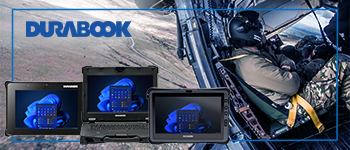Watching brief
Kerry Jones explains why 12-hour shift patterns have significant negative impact on CCTV operator health and effectiveness
It’s not a topic that gets discussed very often, but it should be: CCTV operators in most UK monitoring centres are working long, 12-hour shifts, which can prove detrimental to their performance. This in turn reduces the effectiveness of their clients’ video security systems. And perhaps most importantly, the cumulative effect of those regular 12-hour shifts can have a significant negative health impact as well.
I’ve worked in monitoring centres for most of my adult life, starting just out of school. When I had the opportunity to begin my own CCTV and security alarm monitoring centre with my business partner Andy Saile, we were clear that operator welfare was a priority. It was a no-brainer, really: the operator’s job is literally to be alert and responsive, so why would we want to do anything to detract from that? But that doesn’t appear to be the consensus view. In the UK, it’s commonplace for CCTV security operations to work 12-hour shifts usually organised in four days on, four off patterns. At the end of a single 12-hour shift it’s normal to feel fatigued and unable to focus. That’s the way the brain works.
In a typical a 12-hour shift the fatigue tends to kick in during that stretch between nine and 12 hours. For a CCTV operator in a monitoring centre, that can be dangerous, because focus and attention to the information presented to them is the job. If we miss a criminal incident because of fatigue, that means the security system the client is relying on is not working. The operator is the link between the technology and the police. They are a key component of the whole system.
Too many CCTV operators are treated as if they work in a high-volume call centre. Customers don’t get to speak to the same operator when they need help, so the service is depersonalised. But if an operator is able to develop a personal relationship with a customer, they get to know the details of how that site works, which means they have a level of insight elevated beyond that of any random operator. Their ability to assess an event at that site is enhanced through their ongoing experience.
When Andy and I established our business, we were clear that our operators would work in shifts that were no longer than nine hours at most. Our experience in the industry made this a clear and easy decision: it just delivers the best results for both our customers and our staff. Our feeling was backed up by UK Government guidance on designing CCTV control rooms. The Centre for the Protection of National Infrastructure has produced a detailed publication called Human Factors In CCTV Control Rooms: A Best Practice Guide. This publication says: “12-hour shifts, although common in many settings, may represent a greater risk to health and performance than eight-hour shifts in terms of higher perceptions of workload, fatigue and stress, risk of more errors and accidents, and higher health risks.”
The publication goes on to say that: “Research confirms that the interruption of circadian rhythms (the 24-hour natural bodily cycle) by shift work can have a negative impact on both general wellbeing and physical health (short and long term), as well as on performance due to general fatigue (ie an increased likelihood of errors). Shift patterns are often designed to meet commercial and operational requirements, but serious consideration should be given to minimising negative effects on health and wellbeing by the use of appropriate shift patterns.”
The majority of our shifts cover seven or eight hours, and our operators never work more than four in a row. That allows for an average of three or four days between each batch of shifts. The idea is to avoid running staff into the ground, which in turn makes them more efficient and effective in the service of clients.
Operators are responsible for monitoring and responding to CCTV and intruder alarm events from commercial and domestic properties. They liaise with the police, the customer keyholder, end users and any relevant authorities as required. They’re required to regulate access to customer sites, opening barriers and gates and to perform ‘video escorting’: ensuring at-risk individuals are monitored when leaving late at night via an exposed car park, for instance.
They’re also required to maintain relevant logs for their co-workers, so the next shift is aware of any useful information or site changes, and to ensure they are up to speed with those changes themselves when their next shift begins. That includes maintaining customer records and data such as keyholders, passwords, building occupation times and response procedures.
While the traditional view of CCTV operators is that they will be sitting in front of a massive video wall, eyes constantly scanning, waiting for something to happen, that’s not really the case any loner – at least not in a monitoring centre like ours. Thanks to the technology installed on the sites we cover, our customers are equipped with both cameras and motion sensors, with those systems designed to generate alarms on movement.
When a movement in a specified zone occurs, the alarm is raised directly with the operator responsible for that site. The operator in the control room will then react to that alarm. Their first step is to review the alarm. They’ll check if it has been caused by authorised movement on-site – someone who is meant to be there – or if it is innocent or innocuous, such as an animal walking through the alarm zone. That might take a minute or two to establish. If they are required to investigate what appears to be a criminal incident such as a break-in, that could take up to 15 minutes, using tools including additional camera angles and site plans.
How that alarm is responded to differs from customer to customer depending on their own protocols. If there are dome cameras in place, for instance, they can be utilised to provide additional situational awareness.
Traditional intruder alarm monitoring centres required the operator to react to an alarm by calling a keyholder, who would then respond to the incident. But remote monitoring requires concentration, focus, and deductive skills. The information required to make an informed decision isn’t immediately obvious – the operator has to work out what it is that has moved and establish what has caused it. There’s no one to provide extra detail. The operator’s dark art is in working out for themselves precisely what is relevant information in a scene and what isn’t.
The operator’s judgment call could decide how much police or manned guarding resource is allocated to an incident. There is a real-world cost associated with those decisions. It requires that ability to snap to full focus over the course of their shift, and it’s tiring, whether there’s an incident to respond to or whether the operator is simply in readiness, ensuring that they are prepared to respond.
After an eight or nine-hour period, the body becomes drained while the mind is fatigued. Decision-making is definitely affected. At the end of an intense 12-hour shift, you are simply not thinking as clearly as you should be. Risks escalate as a result. The risk being that the wrong decision can be made or that customers or police are not notified when they should be.
These effects are not just the result of a single 12-hour shift, either. They are the cumulative result of up to four 12-hour shifts in a row. That’s the typical shift pattern. One 12-hour day will leave you drained, feeling like there’s not a lot you can do when you get home because you need to get plenty of sleep in before your next shift. When you’re onto your fourth 12-hour shift in a row, there’s no way you are operating at your best working level.
The result is that an operator’s life is on hold during the course of those shifts. They’re always trying to catch up on sleep to avoid being entirely drained by the end of their next shift, and then all of their day-to-day life maintenance takes place in a rush during their few days off. It’s a vicious circle. And always in the back of their minds is the nagging feeling that regular life activities that need to happen are not being attended to. It’s a further distraction, even if an unintentional one.
Those feelings can be amplified when control-room operators are isolated, squirreled away in dark corners or basements and to all intents and purposes ignored by the owners of their business.
Operator skills will be diluted if their shift lengths and patterns are not considered. Their welfare must be a priority for monitoring centres, or the business suffers. Why would you hire someone on the basis of their skillset who is brilliant at the job, and then work them into the ground until they’re too tired to execute those skills? It doesn’t make any sense for anyone involved: customers, remote monitoring centres or the operators themselves.
Kerry Jones – CEO of Professional Surveillance Management – has over two decades of experience in the security industry, working in all aspects of CCTV remote monitoring before establishing PSM in 2016.









